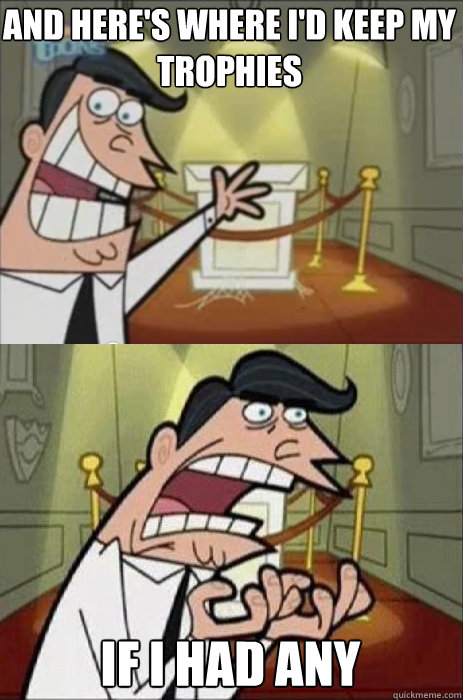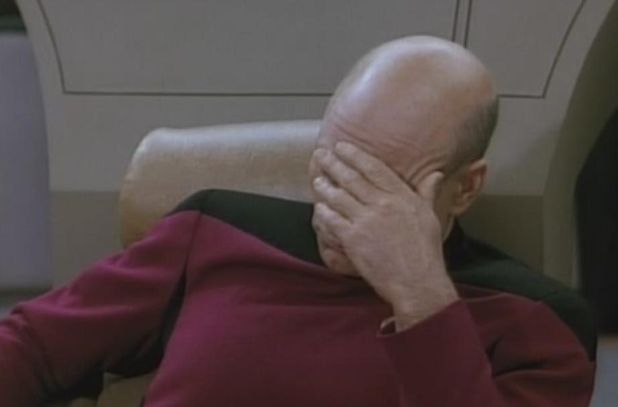So after not really being able to wrap my mind around code. I opted to step it back and start simple. Something I typically try but end up trying to sneak in more features then a program is flexible enough for. And by that I typically mean doing so meant a more code heavy revise than I could handle.. But I think I've found the right thing. And I think this might be the hardest thing for starting up designers (or those of us that have never finished a project on our own), you need to find tools that are simple enough for you to wrap your mind around using them to create your idea, and the tool has to look simple enough and be the least amount of threatening on approach that you don't feel intimidated and overwhelmed when learning.
But my point is, it's nice to know that the set of stairs that lead to your dream projects aren't always as massive as you think. Dream accomplishments aren't nearly as impossible as we think, the tasks are actually very human and legitimately possible.
And, my goal on this blog now.. along with using it to help keep me honest and frequent with my internship writing. Is to show off how possible these dream projects are. I've always been a massive fan of Wolfire Games' marketing strategy of showing start to finish because I know how much that meant to me when I was first thinking of game design. That sudden realization that follows being introduced to your deepest dream activity as a realistic profession, "Crap.. this could be what I do. Even if I need to do a second job, I could be doing this. I could be making those kinda things." That realization that game design and creation wasn't... it wasn't something so out of reach, not a "I could never do that.." situation. And when I first saw those games being made, when I followed the squares on screen betas turn to polished alpha releases, all of that just got me so excited. I spent.. well I haven't stopped thinking about games. Not just as a retreat, or pastime like they were before, but as my worlds. Instead of retreating into a book or movie or game like it was a favored place to be comfortable and be myself in, I started retreating into these as if they were close friends that whispered hints and tricks about how to excite the audience, make them laugh, or make them care. My notebooks at school actually started being used.
And I was draw to ags initially the way I am typically drawn to something.. it was free. Spending the time to download and drudge through the tutorials is some of the best time I've spent. And I say that as a poor, currently under-slept, not quite starving college student. It's break right now for Christ sakes and I can't get myself to sleep in. I'm super excited to have one of my old designs not only off the back-burner (as I now have tools to slowly coax pages of scribbles into sweet digital life), but not just off the back-burner, but to see the tools at my disposal and realize how very doable this vision is. Often with a design orientation, you get an idea for something --and any good designer will tell you, it's not the thing that matters it's the manner in which it works, that makes a truly good design-- and when you don't have any training or understand the vocabulary of how your pen works(coding; in a manner of speaking) then you have the assumption your grand idea isn't possible and is too complex mechanically. And that's what I had thought for the longest time with many of my designs, so what did I do. I focused on the gameplay, the input output relations with the player and the essentials of what really made something. Because if I could figure that, and break a game down to it's smallest components, and then possibly get myself to the point of building those components, then I could design a project solely around that singular component, and then with time build on new features learn and work up to an engine that I could use to build the stories I wanted to.
Once to build a metroid-ish/brawl platformer I started the designs for five separate titles that slowly scaled back the functions of the game until the one I started working on was literally two frogs that could either step forward or backward and were fencing with their tongues. Like a dive kick game, but it's step forward or step backward kick. Attacking while stepping forward made a simple straightforward thrust. A backward step with a attack would make a sideways slash that could parry a hit. That was it. You would go forward in an attack or move back to defend.
And really, I'll probably end up using that same strategy to make my final products, lord knows it'd help fill out the empty file designated for finished products.
 |
| Any finished product is a trophy in itself |
But my point is, it's nice to know that the set of stairs that lead to your dream projects aren't always as massive as you think. Dream accomplishments aren't nearly as impossible as we think, the tasks are actually very human and legitimately possible.
And, my goal on this blog now.. along with using it to help keep me honest and frequent with my internship writing. Is to show off how possible these dream projects are. I've always been a massive fan of Wolfire Games' marketing strategy of showing start to finish because I know how much that meant to me when I was first thinking of game design. That sudden realization that follows being introduced to your deepest dream activity as a realistic profession, "Crap.. this could be what I do. Even if I need to do a second job, I could be doing this. I could be making those kinda things." That realization that game design and creation wasn't... it wasn't something so out of reach, not a "I could never do that.." situation. And when I first saw those games being made, when I followed the squares on screen betas turn to polished alpha releases, all of that just got me so excited. I spent.. well I haven't stopped thinking about games. Not just as a retreat, or pastime like they were before, but as my worlds. Instead of retreating into a book or movie or game like it was a favored place to be comfortable and be myself in, I started retreating into these as if they were close friends that whispered hints and tricks about how to excite the audience, make them laugh, or make them care. My notebooks at school actually started being used.
BACK ON TRACK
So, soon as I pull together the braincells to figure out fraps.. (probably lost half the audience, I swear I'm not completely incompetent), I'll record myself working on this project. Possibly do a tutorial session about everything that goes wrong and how to trouble-spot where you're going wrong.. because I think I've run into almost all of the most basic ones and in trying to find what's wrong realized there isn't a single person on the internet who was simple enough to make the same ignorant mistakes I've made. Thus far I've figured all the problems I've run into by myself (I'm very proud). There will undoubtedly be more in the future. But for now I'm going to upload and dictate my design process, both selections from my notebook on how I'm mapping and keeping track of the perspectives. And mentions of what I learn, as I learn the AGS editor and coding tips and hints.
-My first error, which was one of the most frustrating, was the room I had created was unable to load the background image I had drawn for it. Which was frustrating because I'd go back and forth between the general settings and the image I had made because they were the same size, pixel for pixel; and the computer told me they weren't. The issue had been, of course, the room actually wasn't the same size as the general setting, this was because after I had made the first room I changed the general setting size. This was because I made the room, checked the size, looked at my image editor and realized I wanted it bigger. The rooms are built off the general settings but once built isn't linked to those general settings anymore. The resolution does not bend back and forth to my will in these separate rooms. So basically all I did was delete the room, remake it, and the image worked. That took me two days to figure out. I want you to see me in all my pathetic glory so when I have something to show and you're first reaction is "meh, alright.. that's kinda neat." You'll see how far I've come.
-And here's my coup de gras, or at least I hope it's the most facepalm I get learning this... Facepalm.. Facepalm Games.. that's what I should call my youtube development videos! You see you have to find a way to make it fun, you even have to make losing fun, with my history of game making, this is going to be a whole lot of fun.
My coup de gras was I couldn't get the inbuilt editor to draw walkable areas. I'd select every tool in the little bar, draw rectangles, draw line tool, draw pen tool, and all those other things.. I don't know what do.. But anytime I'd try to draw on the page it'd tell me that I couldn't do that, that I had the eraser selected. And I'd get very upset because I didn't. And it was saying crap about a properties plane, and I couldn't find what they were talking about. It made me very upset, but I had seen the light at the end of the tunnel.. this was possible and this design has been brewing in my head for almost two years, the functions I thought I couldn't do and the art-style had been brewing for four years, and that functionality was literally a number of months of work away. It was possible, I was just being ignorant, and I'd make it work. Enter roughly four days of doing almost nothing but fart around on my computer trying different things on the editor and having five tabs open looking through basic tutorials later I realized I had the properties of the room set on Walkable Area 0... as in no walkable area at all. Meaning I wasn't drawing.. which would automatically set the pen to a function that wouldn't work.
No matter what you start learning, you will always start off making mistakes you will laugh at in the future. So enjoy it, realizing painful ignorance is the universe's way of making learning fun.
My next hurdle.. along with everything coding. Is to find a good paint program to get the kind of pixel art I'm looking for. So far I'm using Sketchbook Express 2011, and with some farting about I might be able to get the precision stuff that I want but right now the settings are giving a difficult to control --as it's designed for tablet and pen(a set i don't really have)-- and faded soft brush effect in the lines. And.. well I'm looking for more pixel accurate hard color effect. Plus this isn't a program everyone can download. So I've downloaded and will come up with a review for PixelStudio next post along with more on the Island.
Goodnight everyone, good luck with your projects.


No comments:
Post a Comment